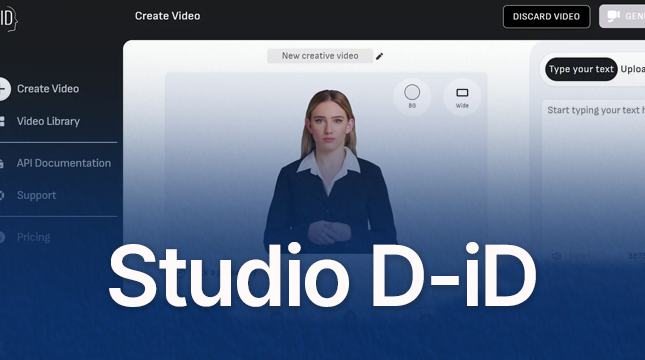This website uses cookies so that we can provide you with the best user experience possible. Cookie information is stored in your browser and performs functions such as recognising you when you return to our website and helping our team to understand which sections of the website you find most interesting and useful.
Find Out All About Visual Hierarchy – An Essential Element of UI/UX
When you are an ace designer, you must have built up a persona for yourself. But whatever criteria or perceptions you put yourself into today we would like to tell who you all actually are: A group of vibrant magicians! By observing that you have complete freedom to manipulate people’s eyes and brains with your astounding ingenuity, we consider ourselves fortunate.
Our topic for the day is somewhat akin to your freedom to manipulate users’ brains. Today, we’re going to speak about one of those ideas that only becomes apparent when done well.
Surprised?! All that is involved in the visual hierarchy. You did understand me now, didn’t you? Though the discussion of visual hierarchy is only getting started. We are going to analyze this idea in great detail, from the very beginning to the successful conclusion. Let’s start now!
Visual Hierarchy: What Is It?
Visual hierarchy is nothing more than the idea of prioritizing UI components based on how they affect users, which in turn enables users to easily approach a call to action.
With the use of their expertise, designers give each page element the necessary attention so that users may quickly determine the significance and hierarchy of each element and proceed as necessary.
The Importance Of Visual Hierarchy In App Development
Visual hierarchy is heavily influenced by user experience and is not just concerned with design. If used properly, visual hierarchy in UI/UX design can produce surprisingly important outcomes. Because a proper visual hierarchy simplifies navigation for users rather than complicating it, it draws attention to the aspects that will eventually prompt users to act.
Therefore, the task of the designer is to carry out the procedure in a way that, despite being positively deceptive, feels so natural to users. Only then can firms reach their intended audience and give them excellent bargains in the future.
What Are The Key Principles of Visual Hierarchy?
The following principles of the visual hierarchy are essential for achieving a flawless visual hierarchy:
1. Let users’ eyes catch the design as per the size and scale
This is the simplest technique to get users to notice a specific element. The largest piece will undoubtedly draw the user’s attention because it is the one that does so most readily.
However, keep in mind that as a designer, you are not intended to enlarge the size of too many items in an effort to grab users’ attention. Negligence in carrying out this gimmick will lower the value of other components, which is the exact opposite of what you want.
The goal in this situation is to embed the visual hierarchy by adhering to the notion of increasing specific design elements that must be immediately noticeable while also taking care of visual appeal.
In a word, users should be able to fully understand how an element is being enlarged in relation to other design elements.
2. Be friends with colors and contrast to create magic with them
Each hue has a unique psychology that connects to the emotions of its users. Red signals and green signals are examples of phrases that are frequently used in various circumstances. Unknowingly, we have a strong connection to color psychology.
Moving on from color psychology, when I talk about contrast, the idea is fairly familiar, but it still has a separate function to fulfill. Designers like you already know it enhances the graphics and enables you to apply enhancement in accordance with the vitality of the element.
Therefore, one of your secret sauces for implementing the ideal visual hierarchy is the combination of hue and contrast.
As a result, we refer to designers as a clan of colorful magicians who play with human psychology and emotions.
3. Design according to the cognitive traits of your users
Businesses typically choose to design their websites and applications using a two-dimensional approach. You can give your designs more illusionary appeal by accentuating the elements you want users to focus on by manipulating their viewpoints.
Animation, 3D design components and other options are always options. Additionally, you can make the already described items bigger. You can use these methods to give your design an optical illusionary sense.
To ensure that users see the call to action, the objective is to capture their attention all at once.
4. Pay attention to users’ viewing patterns
Here, we’re discussing the visual hierarchy principle that gets overvalued the most. Some of us might think that paying attention to people’s viewing habits is a trivial consideration. But in reality, it is something that enables you to deeply comprehend the psychology of users and build accordingly.
Everyone has their own method of inspecting a design, while many people tend to use similar methods with little differences. The F pattern and the Z pattern are the two most popular viewing patterns out of all of them. Let’s investigate these two patterns further.
Text-based pages like blog posts and article pages fall under this type of browsing habit. Users tend to read the text in the F pattern from top left to top right before moving on to the following line in the same manner.
The user should read the first few lines of the page and take notice of nearly all the details while you are building the layout of the page using the F pattern. However, as he/she moves lower, he/she starts to focus more on the left side and starts to just use the F pattern to scan the text. Therefore, developing the layout in accordance with user preferences will enable you to get the desired outcomes.
The Z pattern leads users across to the bottom right, down to the lower left, and then back up to the top left.
Using this pattern will allow users to quickly see each element and get a sense of where the importance of each element lies.
5. Play with typefaces to leave a distinct impression on users
Here are two typeface usage techniques you should know about:
- Emphasize the hierarchy of TypographyUsers can quickly reach the call to action by using fonts that catch their attention. An excellent illustration of this can be found in the picture below. The best method to attract people’s attention at first glance is to use fonts that are the definition of emphasis themselves.Here, you may let your copywriter work their magic to entice users to click the CTA.
- Choose fonts that are in line with your brand voiceIf you seriously consider this idea while picking the typeface, you will undoubtedly look back and be quite grateful for having done so. As users interact with your product, your font acts as the voice of your brand. So make sure to choose the fonts only after a thorough analysis.
Here We sign off
The concept of visual hierarchy is as simple as it seems but far deeper than it is perceived. Though, the thumb rule is, to begin with, baby steps; in the quest of obtaining the perfect visual hierarchy in your UI design, you might end up coming across a different picture.
The drill is to start simple and focus on that one thing of the highest significance that’s going to help drive your design toward success. Moreover, this is the crucial time when you can approach experienced and steadfast UI UX design companies that assure you to help with result-driven solutions.
If you want help with your UI/UX Designs development then contact Netizens Tech today!

Let's Start Your Project
Get free consultation for your digital product idea to turn it into reality!
Get Started






